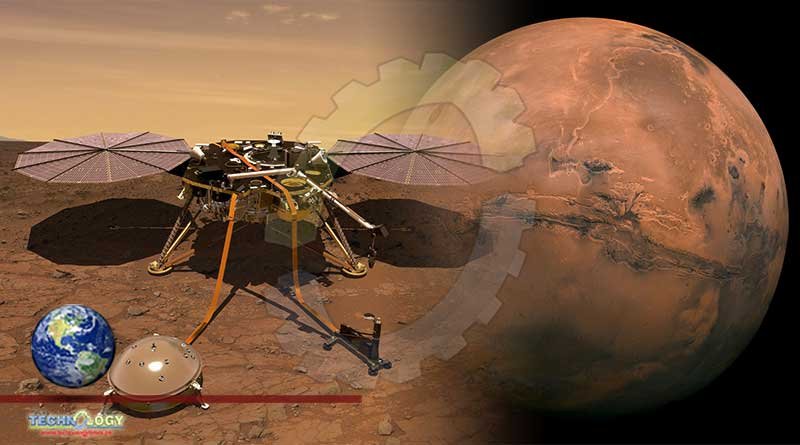NASA’s InSight lander felt the distant rumble of two major ‘marsquakes’ in March, originating from a region near the Martian equator.

NASA’s InSight lander felt the distant rumble of two major ‘marsquakes’ in March, originating from a region near the Martian equator known as the Cerberus Fossae.
Registering magnitudes of 3.1 and 3.3 on March 7 and March 18 respectively, the quakes cement the Cerberus Fossae’s reputation as one of the most geologically active places on the Red Planet today.
A pair of similarly strong marsquakes rocked the same region back in 2019.
The Cerberus Fossae region is scarred by a series of massive, nearly-parallel fissures, created when the planet’s crust was pulled open by a dramatic volcanic event. Volcanism is the primary driver of quakes on Mars: the Red Planet lacks the tectonic plates that cause most of the quakes we feel here on Earth.
On Mars, the Cerberus Fossae region is one of the major epicenters of such activity, and is a fascinating area to study because of its geological instability, both in the past and in the present day.
Our ability to detect marsquakes is very new. Geologists have suspected their existence for decades, but it wasn’t until InSight fired up its Seismic Experiment for Interior Structure (SEIS) in early 2019 that scientists were able to incontrovertibly catch a recording of one.
The Viking 2 lander observed an event back in 1976 that may have been a small quake, but at that time it was impossible to rule out wind or weather as the cause. InSight, on the other hand, has now found hard evidence of over 500 seismic events in just the last two years.
Most marsquakes detected by SEIS have been small, but those originating from the Cerberus Fossae are among the clearest and strongest yet.
Incredibly, geologists were able to predict that InSight might hear quakes from the Cerberus Fossae region six years before the spacecraft even landed on Mars.
Back in 2012, a research team used imagery taken by the Mars Reconnaissance Orbiter’s HiRISE camera to examine the area, and discovered evidence of recent landslides, as well as boulders that had rolled down the steep slopes of some of the chasms.
These rockslides seemed consistent with the after-effects of earthquakes here at home, suggesting that a marsquake might recently have occurred. InSight’s new detections validate that theory.
The InSight mission received a two-year extension in January, and in that time the team hopes to create a detailed record of Martian seismic activity.
To ensure the highest possible quality data, they have begun using the lander’s robotic arm to bury the SEIS instrument’s cable. Doing so will reduce wind noise, vibrations, and temperature fluctuations, all of which can interfere with the seismometer and disguise possible marsquake detections.
Originally published at Science Alert
